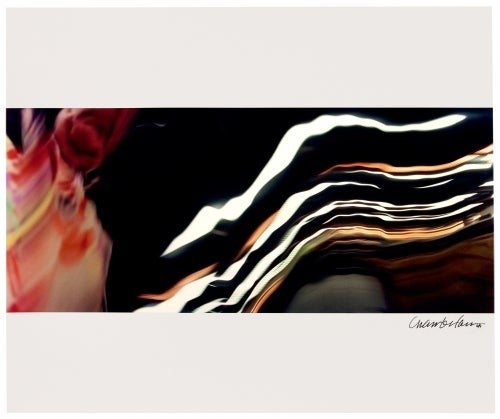JOHN CHAMBERLAIN PHOTOGRAPHS

A personal exhibition by John Chamberlain.
The Galerie Karsten Greve is delighted to present Photographs, an exhibition devoted to the photographic oeuvre of the major twentieth-century American artist John Chamberlain, whose metallic works, resulting from a mechanical process of compression and crushing, revolutionised contemporary art.
John Chamberlain shot to fame in the 1960s for his sculptures made from crushed car carcases, a project he began in 1958. He became one of the leading figures of contemporary art, offering a crossover between the gestural energy of Abstract Expressionism and the consumerist euphoria of Pop Art. John Chamberlain shook up contemporary sculpture with his works, produced by compressing, cutting up, colouring and mounting various pieces. He elevated everyday materials to the status of art, in an aesthetic endeavour akin to Dadaist ready-mades. John Chamberlain used debris from the motor industry, which shaped much of America’s industrial history as well as its bankruptcy, in conjunction with tools not traditionally associated with the art world, to create works of erotic beauty in vibrant colours.
While John Chamberlain owed much of his fame to his sculptures, he experimented over the course of his career with a wide variety of media, from painting and drawing to monotyping, film, and above all photography. His first photographs were taken in 1977 with a Widelux camera given to him by Larry Bell. His first photography exhibition was in 1979 in New York. The Galerie Karsten Greve has been showing his photographs and sculptures since the 1980s.
Using the Widelux meant Chamberlain was able to create photographs that followed the same principles as his other artworks, resulting from the transformation of extant material based on his own subjectivity and the principle of collage. The Widelux is a panoramic camera that puts together a wide-angle shot from smaller images placed side by side. Its mobile lens meant it could take shots with an angle of between 150° and 360° without distortion, mainly used to record landscapes. When used with a tripod, as was customary, the Widelux produced clear, balanced compositions.
John Chamberlain challenged the camera’s typical use when he decided to pivot and swing it while taking the shot. The resulting photographs revealed the traces of controlled, intuitive improvisation, rooted in the idea of movement that deforms and blends objects into a flux of colours. Chamberlain’s interest in movement has often been compared to the work of Futurist artists, particularly the photography of Anton Giulio Bragaglia and the art of Umberto Boccioni. Yet his panoramic photographs lend a further aesthetic dimension to the use of movement as a principle for the destruction and reconstruction of shapes. He used the errors produced by the swing of the camera to strip things of their immobile material reality and project them into a dimension in which time is materialised by fluidly flowing colours.
Colour, shapes, and reflected light are all significant aspects of John Chamberlain’s photography. The contrast between the cool tones of artificial light and the warmer hues of daylight is particularly foregrounded. He achieved this by playing with his choice of film, using for example a film calibrated for natural light for indoor photography to ring a chandelier in a bar or restaurant with a halo of light, lending the photograph a very warm tone. The 1989 series Studio
Lite takes the opposite approach, using a film calibrated for artificial light which, used on the neon lights in his studio, captures extremely pure white waves underscoring the movement of the camera.